Pale Pitcher Plants (Sarracenia alata) at Big Thicket National Preserve
On March 29, 2022, we visited the Big Thicket National Preserve in Southeastern Texas. We were hoping to see some insectivorous plants, and the Preserve’s “Pitcher Plant Trail” sounded like a promising place to start.
Within a couple of hundred yards of the trailhead, we came to a damp, open meadow that had a really nice boardwalk going through it.
And in that meadow - lots of Pitcher Plants!
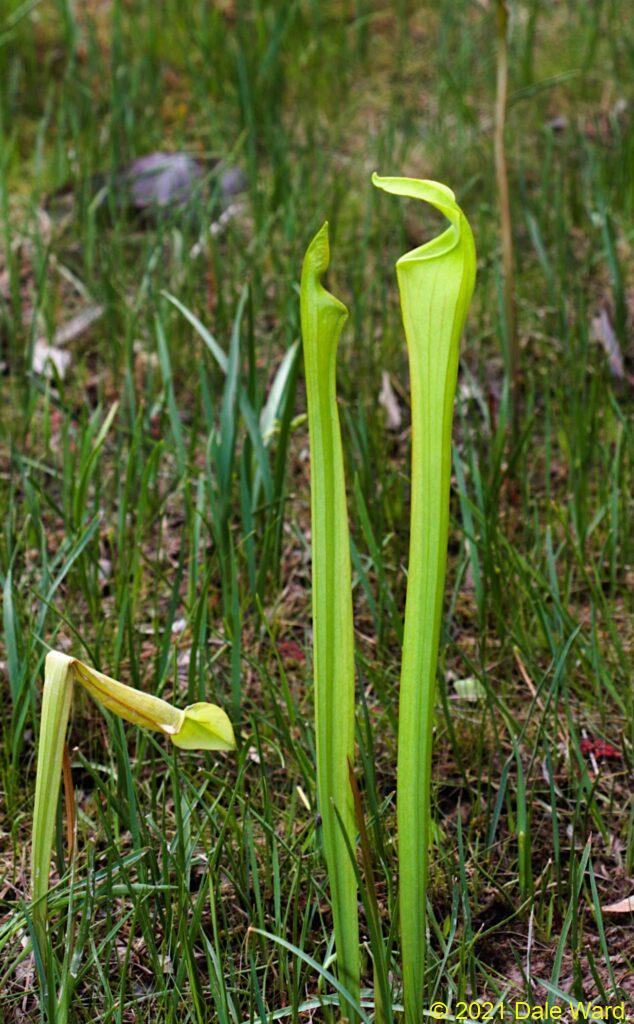 Pale Pitcher Plants (_Sarracenia alata_). We were here just as the Pitchers were emerging.
Pale Pitcher Plants (_Sarracenia alata_). We were here just as the Pitchers were emerging.
 Birdwatching from the luxurious boardwalk that the Park built over the meadow. Oh, those yellow flowers in the background? Pitcher Plants!
Birdwatching from the luxurious boardwalk that the Park built over the meadow. Oh, those yellow flowers in the background? Pitcher Plants!
We were there early in the Spring, so the leaf-pitchers were just forming. But there were Pitcher Plant flowers throughout the meadow.
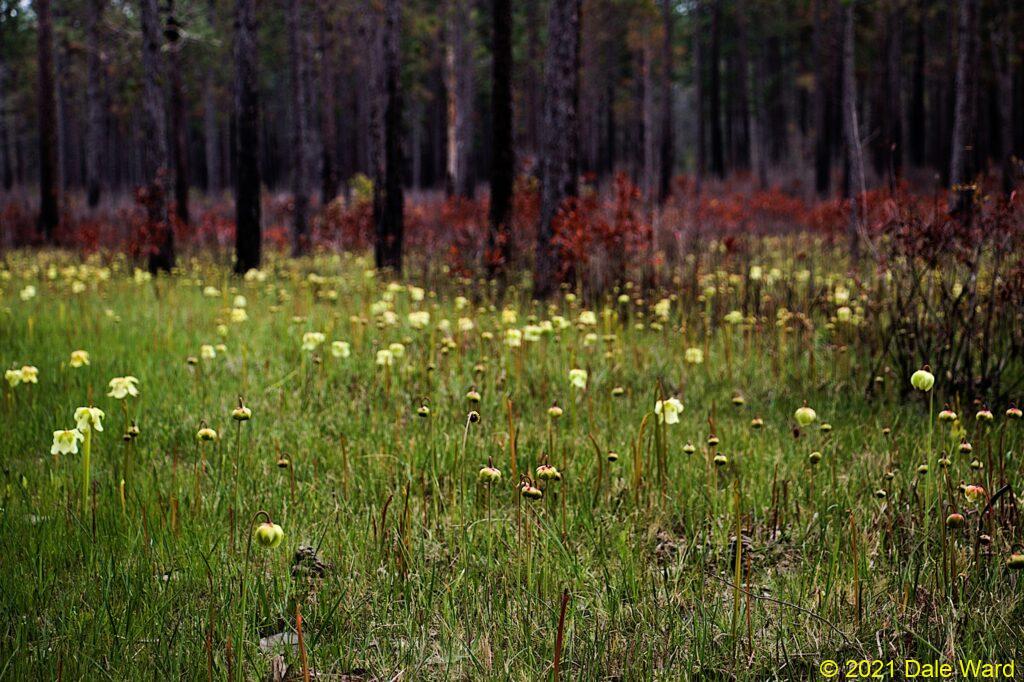 Here’s a wider angle shot giving a better idea of what the meadow looked like. The yellow flowers are all Pitcher Plant flowers. In the background of the photo, you can see the Longleaf Pine forest that surrounded the meadow.
Here’s a wider angle shot giving a better idea of what the meadow looked like. The yellow flowers are all Pitcher Plant flowers. In the background of the photo, you can see the Longleaf Pine forest that surrounded the meadow.
The soil here was not at all what I’d expected. In New Hampshire, the Pitcher Plant bogs I’d seen had been comprised of thick layers of Sphagnum moss.
The soil here seemed like ‘real’ topsoil to me, not comprised of growing moss. The ground was damp, with a few shallow spots of standing water. There were Crayfish turrets scattered throughout he meadow, so the water table was high.
We could see that the area had burned fairly recently, there were still a few charred leaves on some of the forest vegetation.
I was able to lay down on the boardwalk and get photos of the plants. It would have been difficult to avoid crushing Pitcher Plants otherwise, there were that many of them.
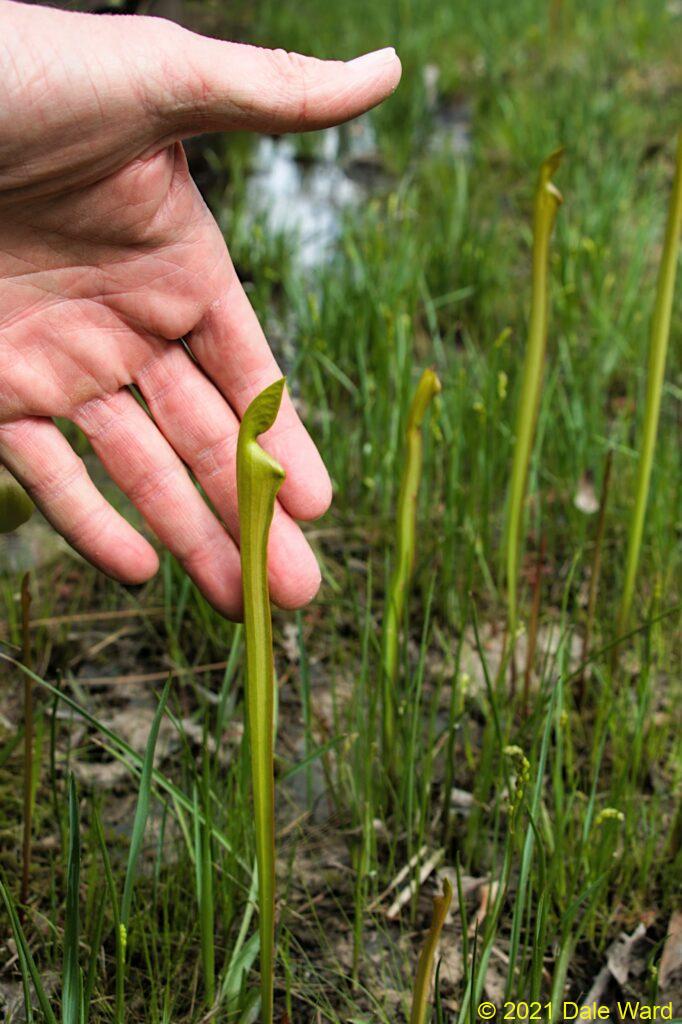 Pale Pitcher Plant (_Sarracenia alata_), with my hand for scale.
Pale Pitcher Plant (_Sarracenia alata_), with my hand for scale.
The pitchers were much smaller in diameter than the ones I had seen in New Hampshire. Those were Sarracenia purpurea, the “Purple Pitcher Plant”. These smaller diameter, more attenuated Texas plants were Sarracenia alata, the “Pale Pitcher Plant”.
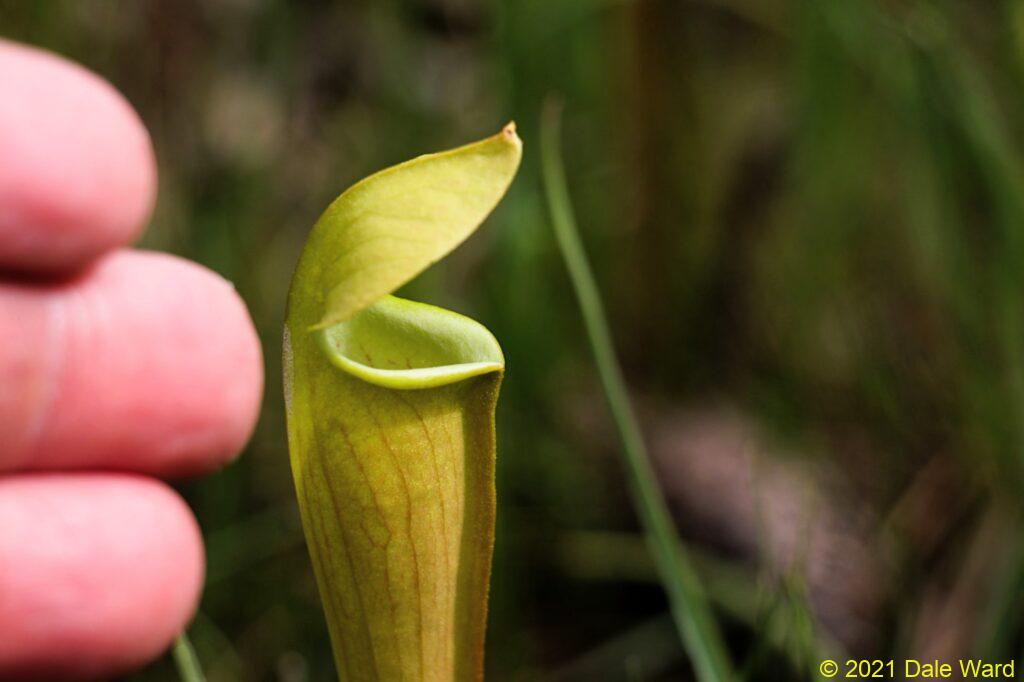 Closer view of opening of Pale Pitcher Plant _(Sarracenia alata_), with my fingers for scale.
Closer view of opening of Pale Pitcher Plant _(Sarracenia alata_), with my fingers for scale.
The younger pitchers were solid pale green in color. The older pitchers had the beginnings of red/purple venation markings, and the margins of their leaves were more curled.
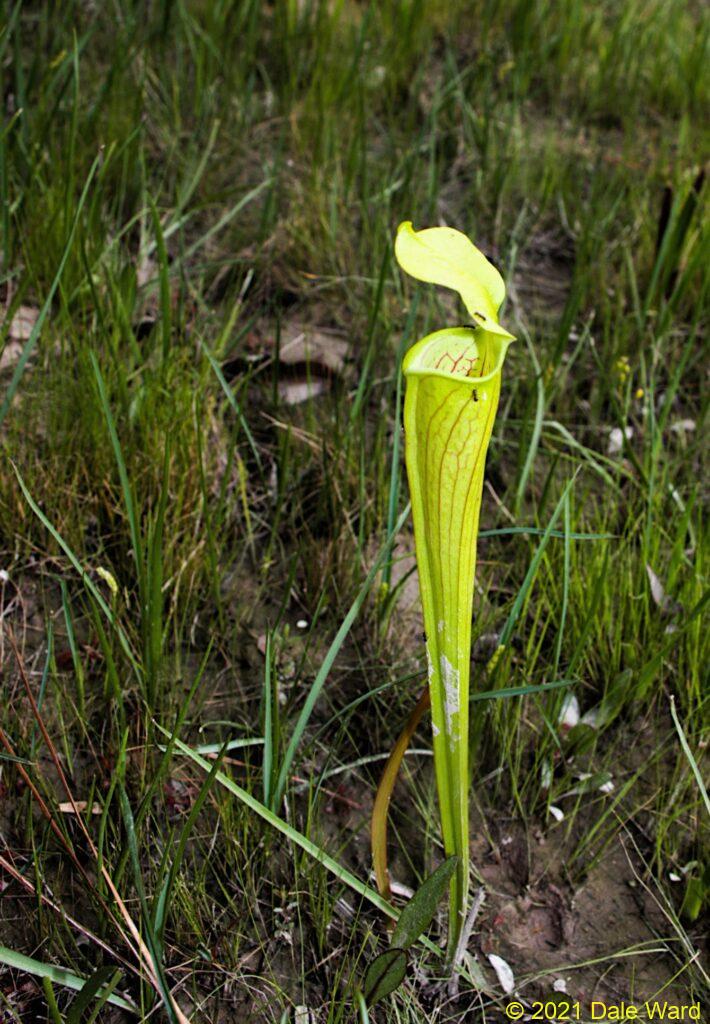 Pale Pitcher Plant (_Sarracenia alata_). This one is a little larger than most of the pitchers I saw, and also has the beginning of the purple venation. Note also that there are ants on this pitcher - I wonder if it’s begun to secrete nectar?
Pale Pitcher Plant (_Sarracenia alata_). This one is a little larger than most of the pitchers I saw, and also has the beginning of the purple venation. Note also that there are ants on this pitcher - I wonder if it’s begun to secrete nectar?
Interestingly, the more mature leaf pitchers were much more likely to have ants on them. I’m guessing these older leaves were beginning to secrete their nectar bait.
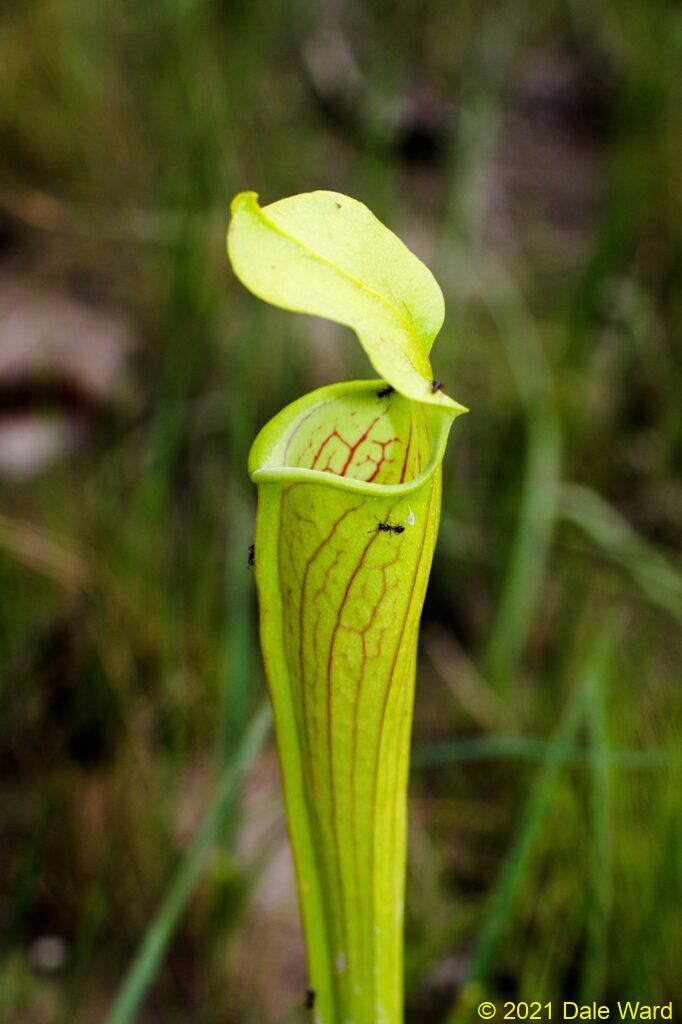 Pale Pitcher Plant _(Sarracenia alata_). I’m not sure what species the ants were.
Pale Pitcher Plant _(Sarracenia alata_). I’m not sure what species the ants were.
The Pitcher Plant flowers were interesting. When they opened, they faced downward, towards the ground. Some of the flowers had holes cut in their petals. I’m guessing that was beetle damage.
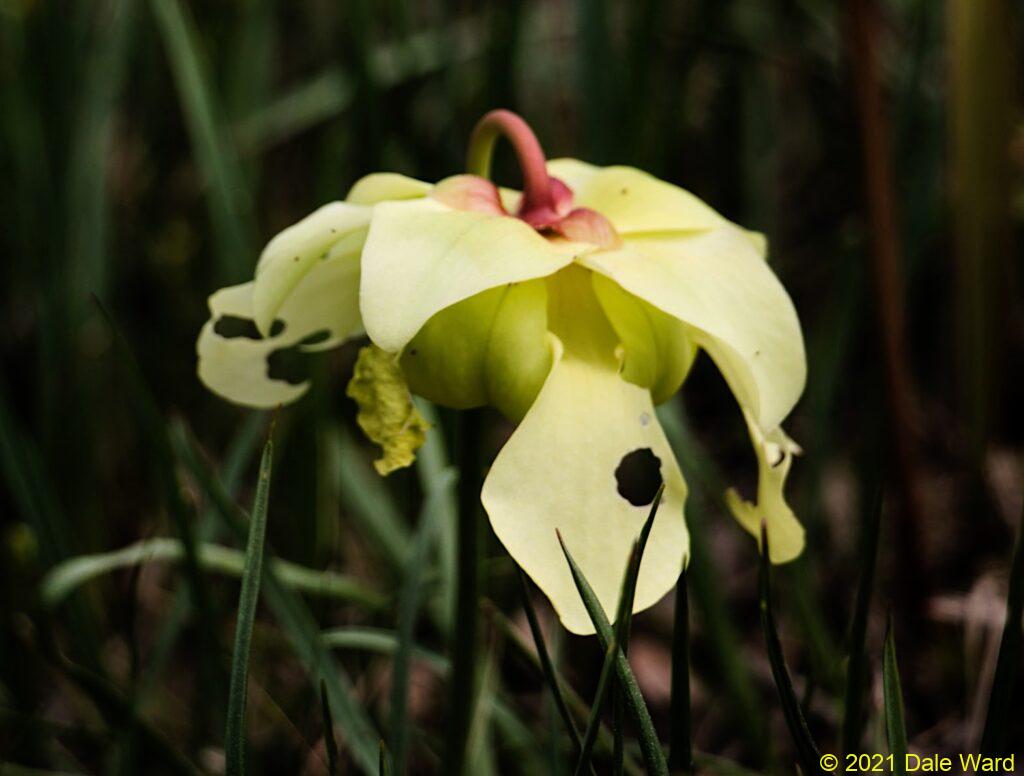 Pale Pitcher Plant (_Sarracenia alata_) flower. Like most of the flowers I saw, it’s down-ward facing. This one has some damage to its petals, perhaps from beetles?
Pale Pitcher Plant (_Sarracenia alata_) flower. Like most of the flowers I saw, it’s down-ward facing. This one has some damage to its petals, perhaps from beetles?
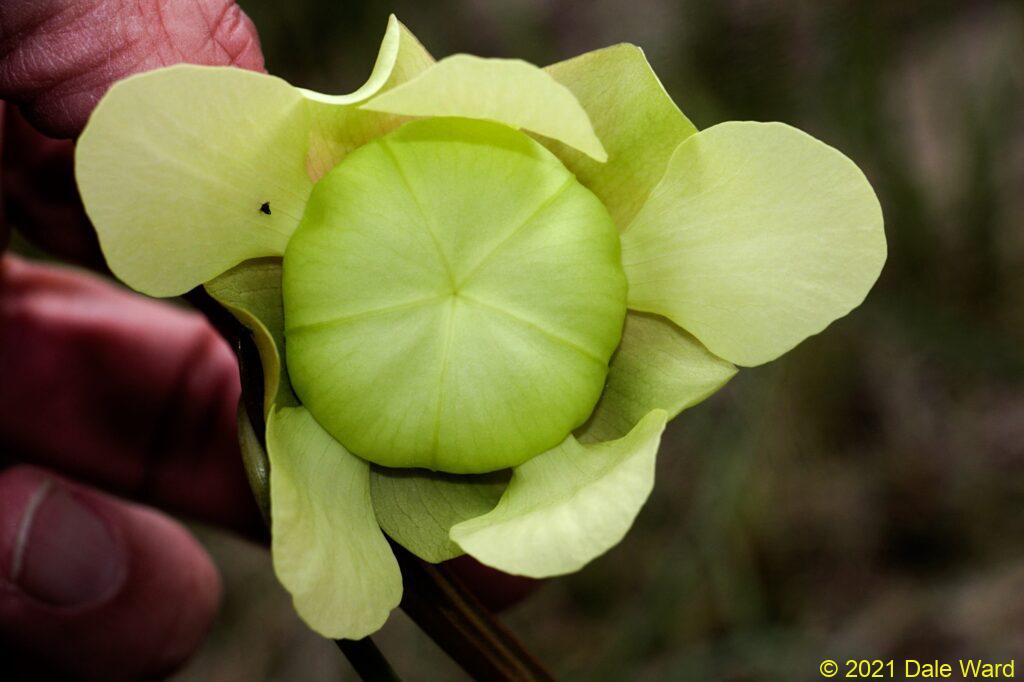 Pale Pitcher Plant (_Sarracenia alata_) flower, with my fingers for scale.
Pale Pitcher Plant (_Sarracenia alata_) flower, with my fingers for scale.
One of the papers I came across (Hotti etal, 2017 - see “Sources” below) stated that researchers have found an alkaloid, coniine, in a number of Sarracenia Pitcher Plants, including Sarracenia alata. The researchers noted that coniine acts as a paralytic insects. They also said that coniine acts as an attractant for some insects. I could see both the attractant and the paralytic properties of coniine being useful for a plant that traps, drowns, and digests insects.
As an aside, Coniine is one of the toxins in Poison Hemlock. A Poison Hemlock extract is supposed to be the way that the Ancient Greeks executed Socrates. Small world, chemically, huh?
While we were at this meadow, we also saw another insectivorous plant - the Sundew Plant. I’ll write about those marvelous little organisms on another day, in another post.
Sources:
Wikipedia’s Sarracenia page, and their Sarracenia alata page. And, oh yeah, their coniine page. I’m continually blown away by what a resource these folks are.
Hotti, Hannu; Gopalacharyulu, Peddinti; Seppänen-Laakso, Tuulikki; Rischer, Heiko (21 February 2017). Gupta, Vijai (ed.) Metabolite profiling of the carnivorous pitcher plants Darlingtonia and Sarracenia. https://doi.org/10.1371/journal.pone.0171078. PLOS ONE. Public Library of Science (PLoS). 12 (2): e0171078.
Hotti, Hannu and Heiko Rischer. 2017. The killer of Socrates: Coniine and Related Alkaloids
in the Plant Kingdom. Molecules 2017.